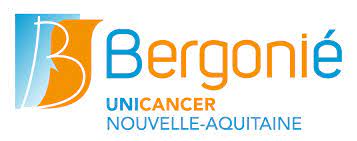Lorlatinib for advanced anaplastic lymphoma kinase–positive non–small cell lung cancer: Results of the IFCT-1803 LORLATU cohort
Résumé
Background: Anaplastic lymphoma kinase (ALK)-rearranged (ALK+) non-small cell lung cancer (NSCLC) represents a rare subset of lung cancer, with specific presentation, and multiple treatment options, including selective tyrosine kinase inhibitors (TKIs). Real-world evidence is insufficient regarding the actual real-life treatment sequences in the late line setting, and available clinical trials may not reflect real-world situation. Here, we took advantage of the French Expanded Access Program (EAP) of lorlatinib, a third-generation TKI targeting ALK and ROS1, to assess treatment sequencing, and lorlatinib efficacy and safety, in patients with ALK+ NSCLC.Methods: All consecutive patients with advanced ALK+ NSCLC treated between October 2015 and June 2019 with lorlatinib as part of EAP were included. Data were collected and reviewed from medical records by independent research staff of the French Thoracic Cancer Intergroup. The primary endpoint was progression-free survival (PFS).Results: Of the 208 patients included, 117 (56%) were female, 142 (69%) were never smokers, and 180 (87%) had stage IV NSCLC at diagnosis. The most frequent histology was adenocarcinoma (94%), and the median age was 60.9 years. At the time of lorlatinib initiation, 160 (77%) patients had brain metastases, and 125 (72%) were performance status 0/1. Lorlatinib was delivered as 2nd/3rd/4th/5th+ line in 4%/17%/30%/49% of patients. A total of 162 (78%) patients had previously been treated with chemotherapy, 194 (93%) with a first-generation ALK-TKI, 195 (94%) with a second-generation ALK-TKI. The median follow-up from lorlatinib initiation was 23.3 months. The median PFS, median overall survival (OS) from lorlatinib initiation and median OS from advanced NSCLC diagnosis were 9.9 months (95% confidence interval [CI] 6-12.3 months), 32.9 months (95% CI 18.7 months to not reached) and 97.3 months (95% CI 75.7-152.8 months), respectively. The median duration of treatment with lorlatinib was 11.8 months (95% CI 8.5-18.8 months). Overall response and disease control rate were 49% and 86%, respectively. Central nervous system objective response rate was 56%. Treatment was stopped due to toxicity in 28 patients (14%). The safety profile of lorlatinib was consistent with previously published data.Conclusions: Real-world evidence indicates that lorlatinib offers a significant clinical benefit and high intracerebral antitumour activity in heavily pretreated patients with ALK+ NSCLC.
Domaines
Cancer| Origine | Fichiers produits par l'(les) auteur(s) |
|---|



